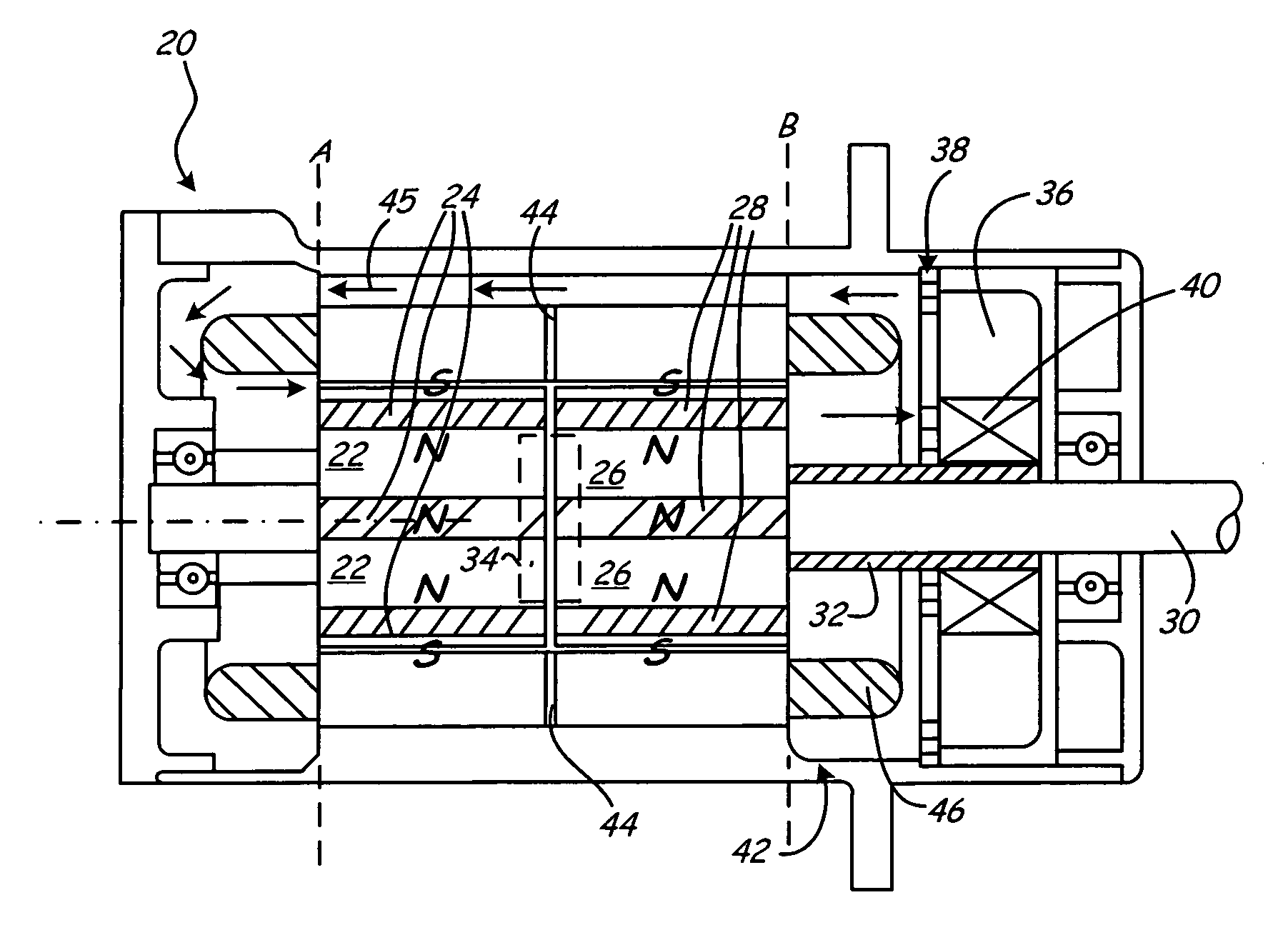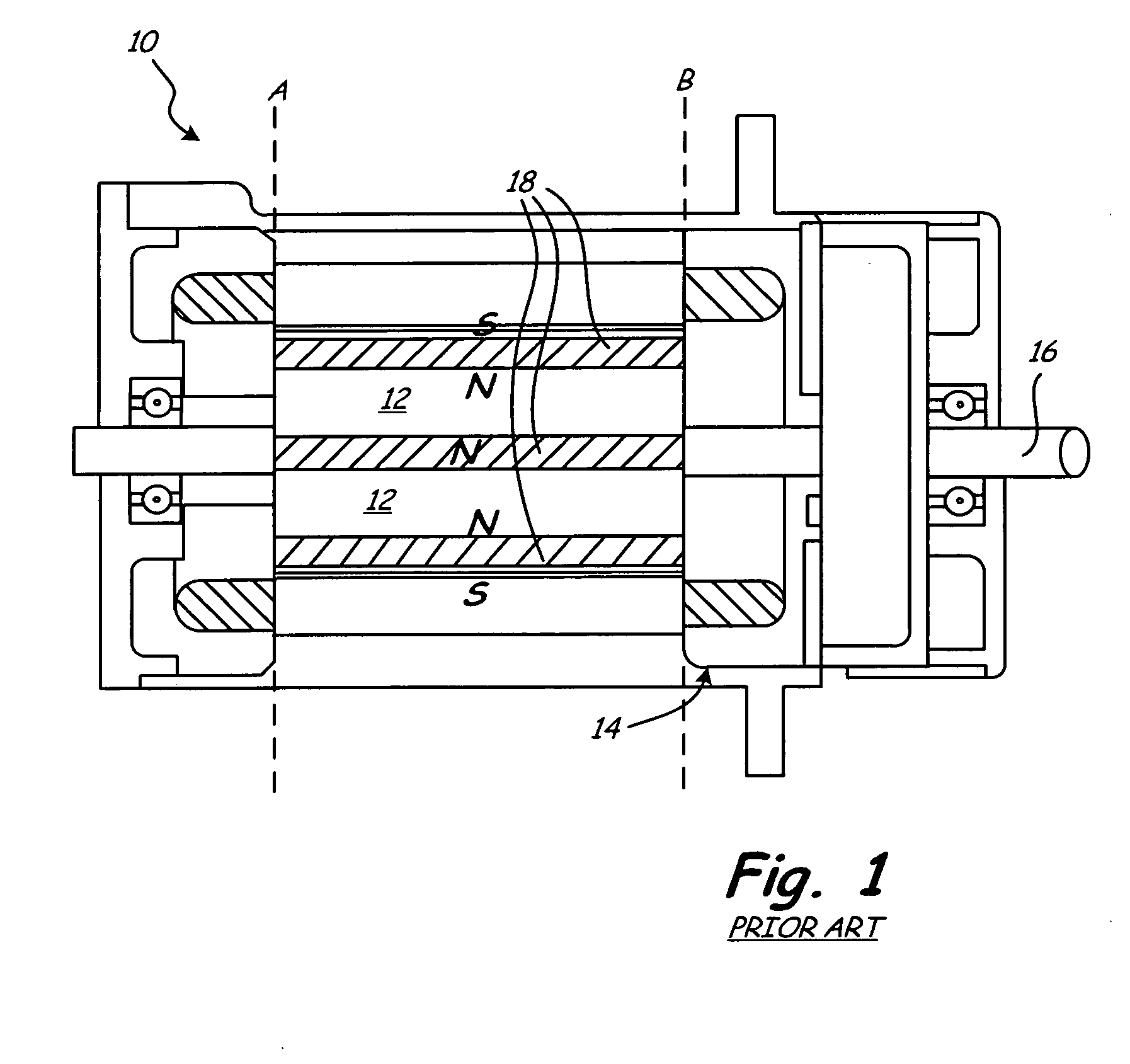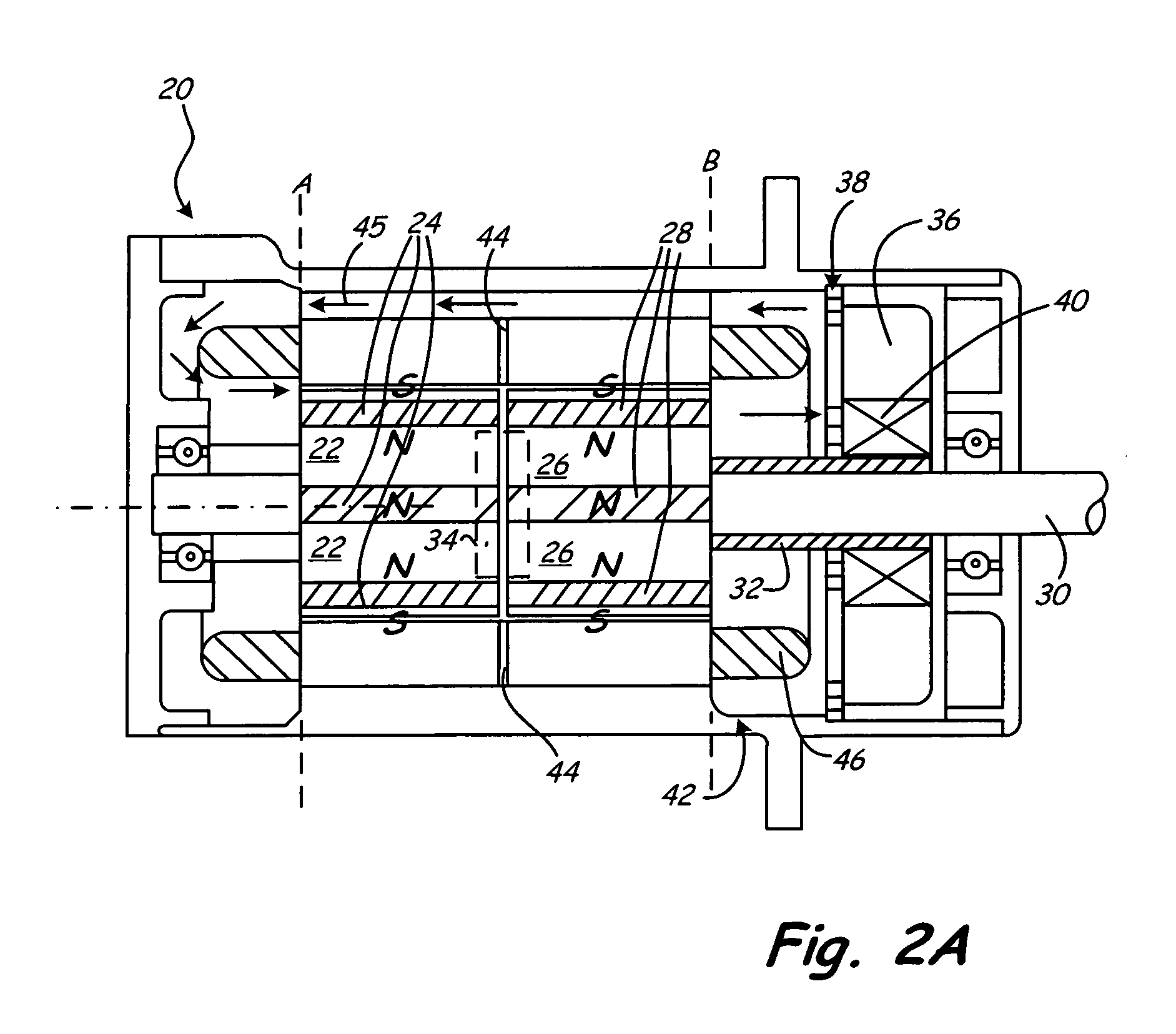Self-regulating permanent magnet device
a permanent magnet, self-regulating technology, applied in the direction of dynamo-electric converter control, magnetic circuit rotating parts, magnetic circuit shape/form/construction, etc., can solve the problems of limited maximum speed of permanent magnet motors, impracticality of pmgs in a number of applications,
- Summary
- Abstract
- Description
- Claims
- Application Information
AI Technical Summary
Benefits of technology
Problems solved by technology
Method used
Image
Examples
Embodiment Construction
[0013]FIG. 1 is a broken cross-sectional view of a standard permanent magnet device (“PMD”) 10 as known in the prior art. PMD 10 includes rotor 12, stator 14, and shaft 16. Within the dashed line labeled A and B is a cross-sectional view that provides an unobstructed view of rotor 12 and the location of associated permanent magnet set 18. Outside of dashed lines 1A and 1B is a cross-sectional view of stator 14 and shaft 16, wherein shaft 16 is connected to provide / receive rotational energy to / from rotor 12, depending on whether PMD 10 is used in a generator or motor application.
[0014]Rotor 12 supports at least one permanent magnet set 18, wherein each permanent magnet included in the set has a magnetic north pole and a magnetic south pole. In a generator application, mechanical energy provided by shaft 16 causes rotor 12 and associated permanent magnet set 18 to rotate. The rotating permanent magnets generate a rotating magnetic field that interacts with the stator coils (not shown)...
PUM
 Login to View More
Login to View More Abstract
Description
Claims
Application Information
 Login to View More
Login to View More - R&D
- Intellectual Property
- Life Sciences
- Materials
- Tech Scout
- Unparalleled Data Quality
- Higher Quality Content
- 60% Fewer Hallucinations
Browse by: Latest US Patents, China's latest patents, Technical Efficacy Thesaurus, Application Domain, Technology Topic, Popular Technical Reports.
© 2025 PatSnap. All rights reserved.Legal|Privacy policy|Modern Slavery Act Transparency Statement|Sitemap|About US| Contact US: help@patsnap.com



